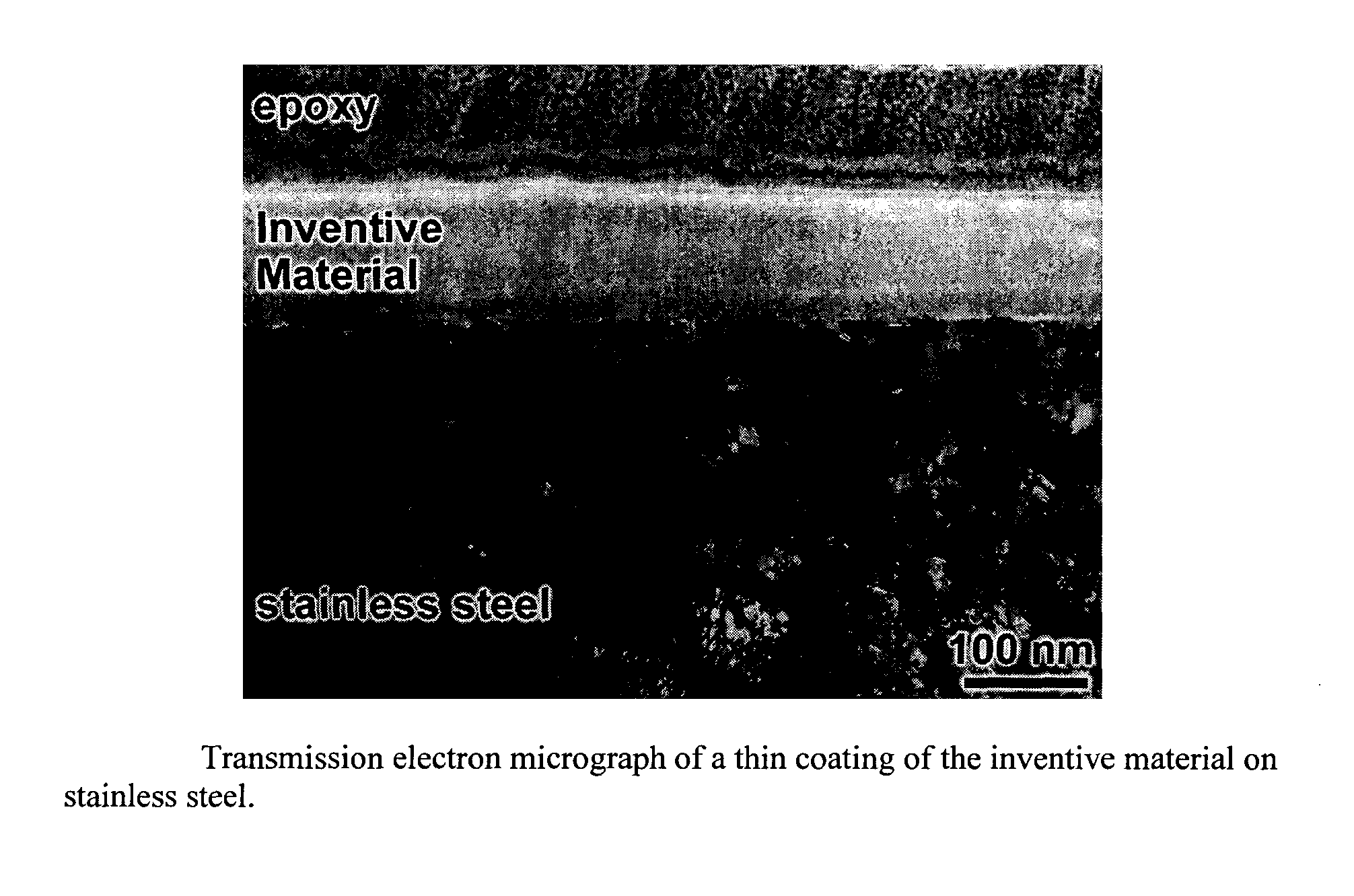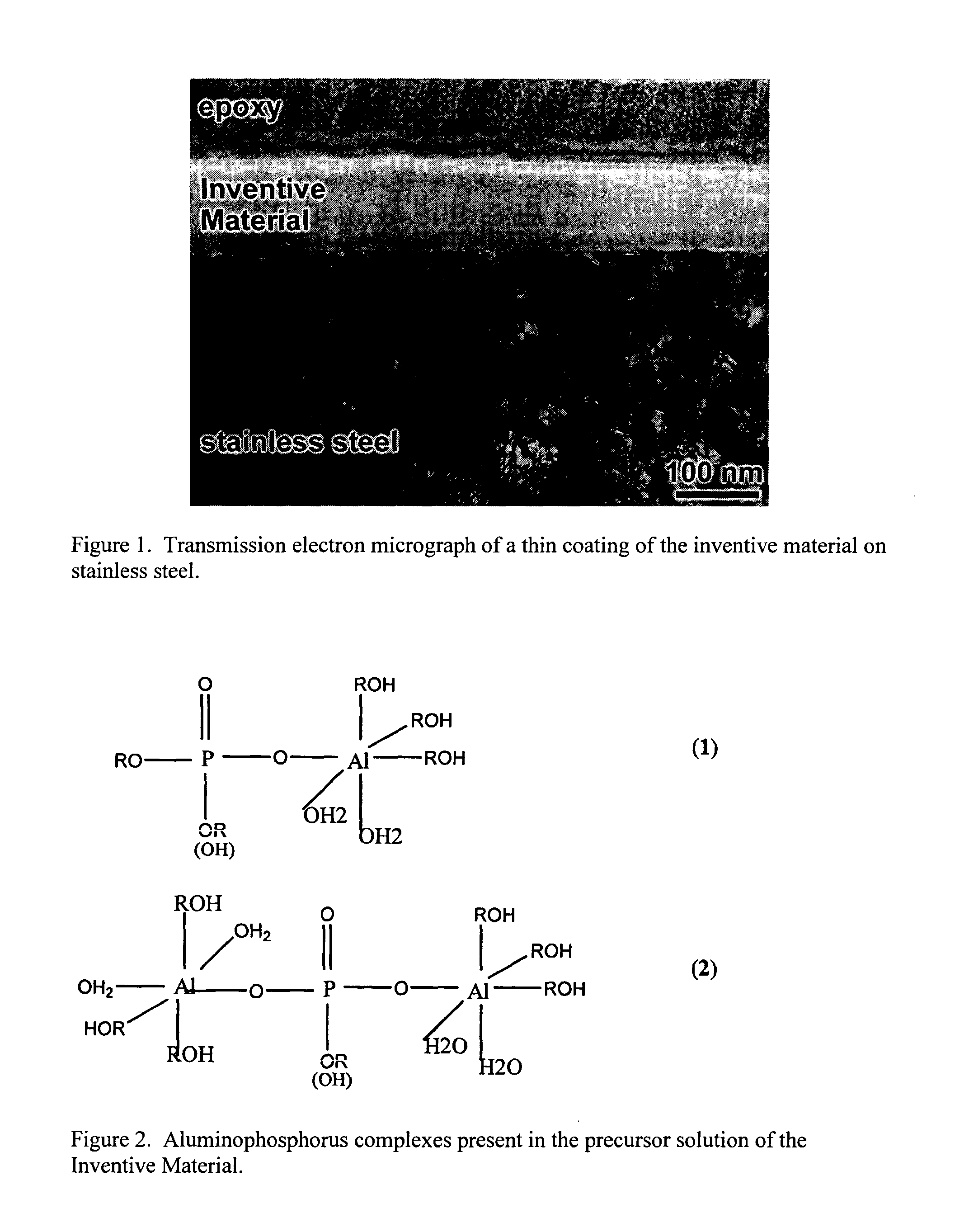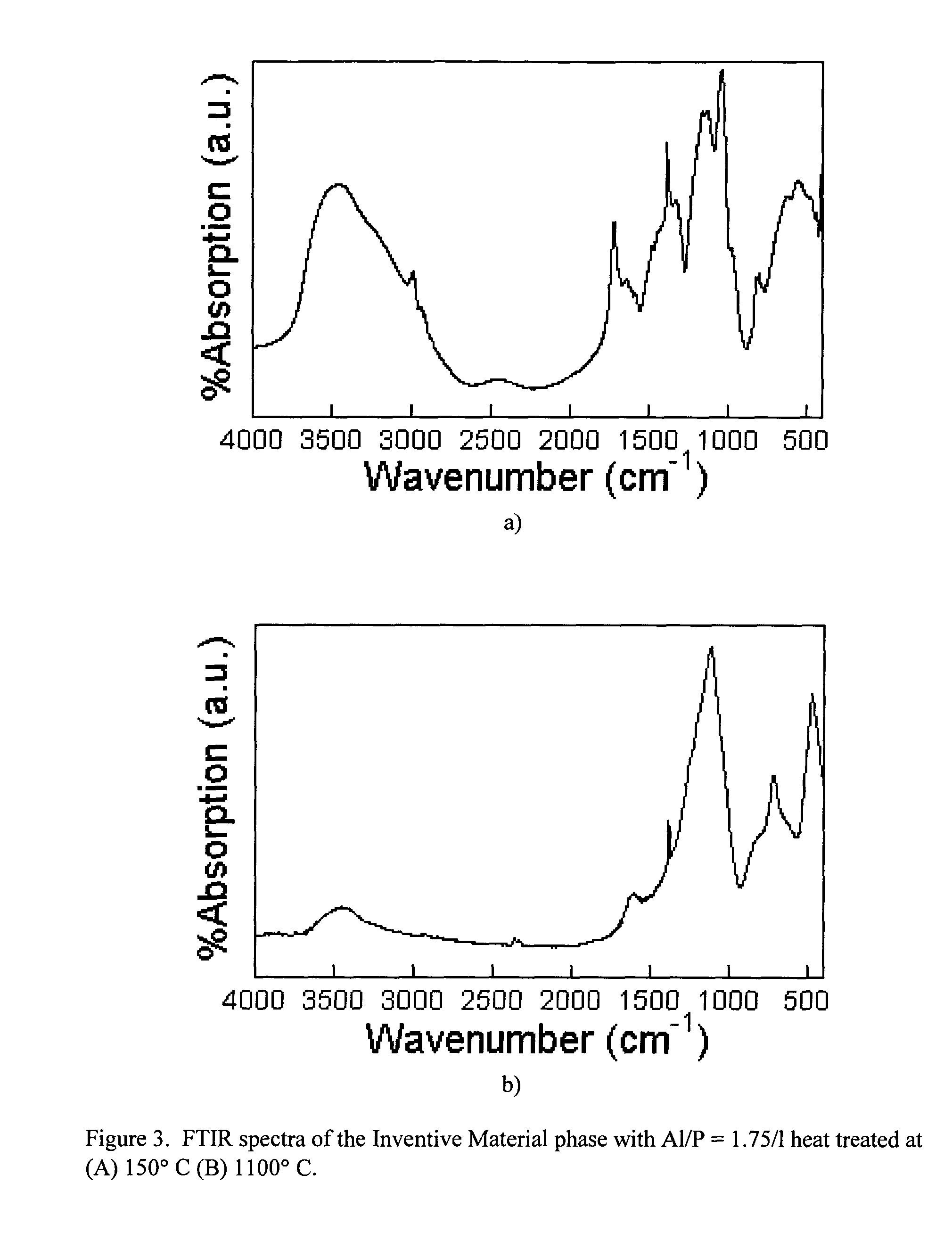Aluminum phosphate compounds, compositions, materials and related composites
a technology of aluminum phosphate and composite materials, applied in the field of aluminum phosphate compounds, compositions, materials and related composites, can solve the problems of few thermally stable amorphous compositions, high porous and crystalline forms, and crystalline coatings that do not provide hermetic protection from gas or liquid exposure, etc., to achieve enhanced refractive index, reduce surface energy of composite substrates, and enhance emissivity and associated mechanical properties
- Summary
- Abstract
- Description
- Claims
- Application Information
AI Technical Summary
Benefits of technology
Problems solved by technology
Method used
Image
Examples
example 1
[0096]794 g of P2O5 is dissolved in 2.4 liters of ethanol and stirred for several hours. 1800 g of Al(NO3)3.9H2O dissolved in 3 liters of ethanol by stirring. 61 mL of phosphorous solution and 501 mL of aluminum solution are mixed. This solution is refluxed for time sufficient to promote the formation of complex esters containing Al—O—P groups. This solution can be further diluted with organic solvents as necessary for coating application.
example 2
[0097]The 50 ml of precursor solution prepared in example 1 is dried by evaporating solvent at 150° C. in an oven. Thermogravimetric analysis of this dry powder is performed. The TGA data in FIG. 4 shows about 47% weight loss due to organics and there is no appreciable weight loss above 350° C. indicating that nearly all of the organics and nitrates are no longer present in the material.
example 3
[0098]Precleaned soda glass plain microscope slides (3×1×1 mm) are ultrasonicated in acetone and methanol for 5 min each. Then the slides are dried in nitrogen. These slides are dipped in solution prepared in example 1. After retracting slowly from the coating solution, dried with heat gun and cured at 550° C. for 0.2 hours.
PUM
| Property | Measurement | Unit |
|---|---|---|
| wavelengths | aaaaa | aaaaa |
| transparent | aaaaa | aaaaa |
| contact angle | aaaaa | aaaaa |
Abstract
Description
Claims
Application Information
 Login to View More
Login to View More - R&D
- Intellectual Property
- Life Sciences
- Materials
- Tech Scout
- Unparalleled Data Quality
- Higher Quality Content
- 60% Fewer Hallucinations
Browse by: Latest US Patents, China's latest patents, Technical Efficacy Thesaurus, Application Domain, Technology Topic, Popular Technical Reports.
© 2025 PatSnap. All rights reserved.Legal|Privacy policy|Modern Slavery Act Transparency Statement|Sitemap|About US| Contact US: help@patsnap.com



